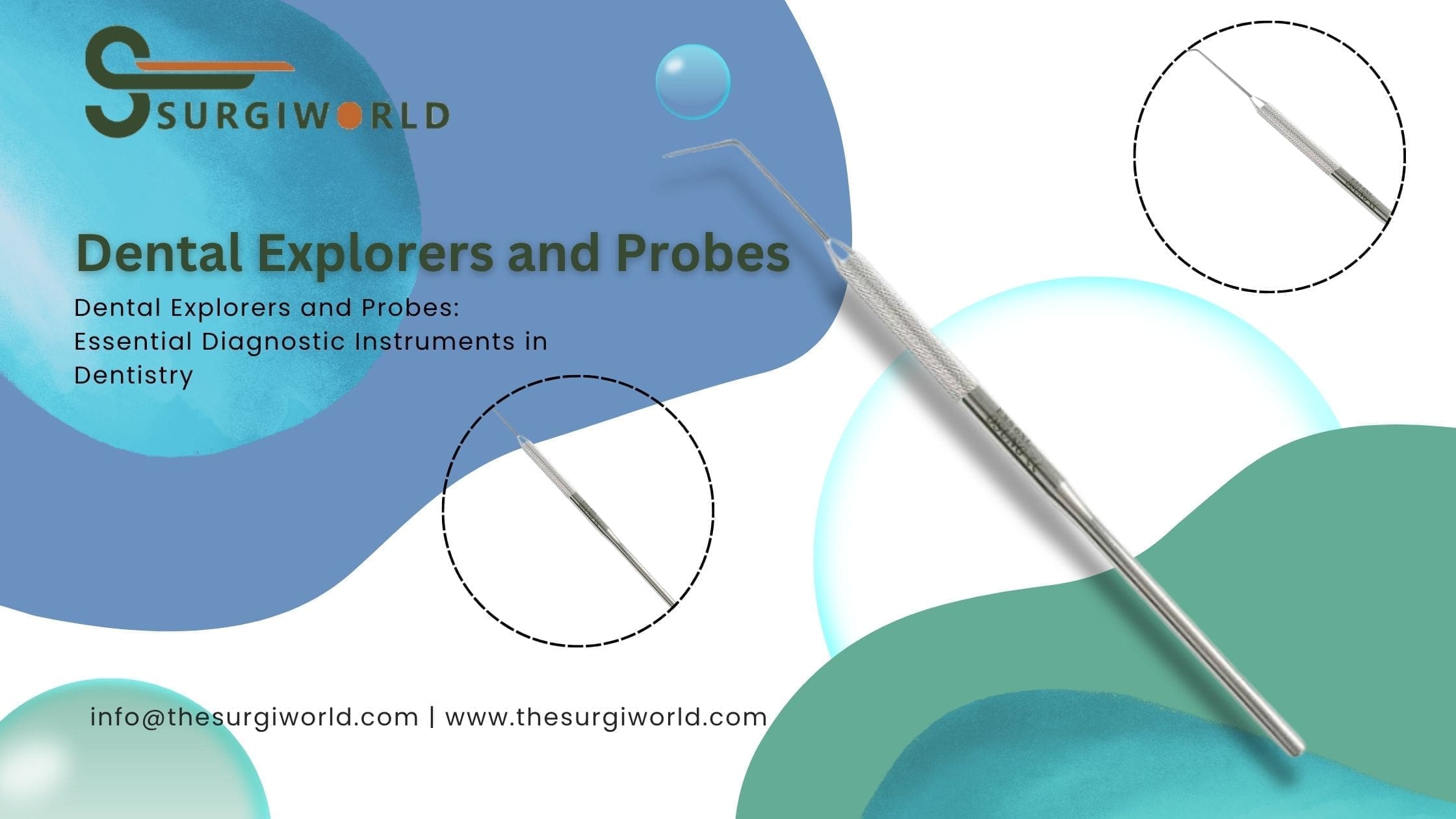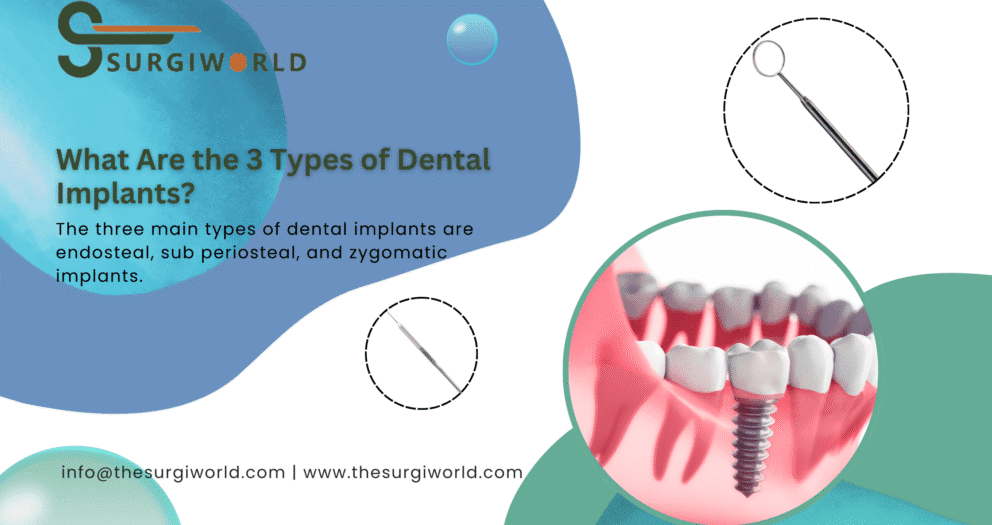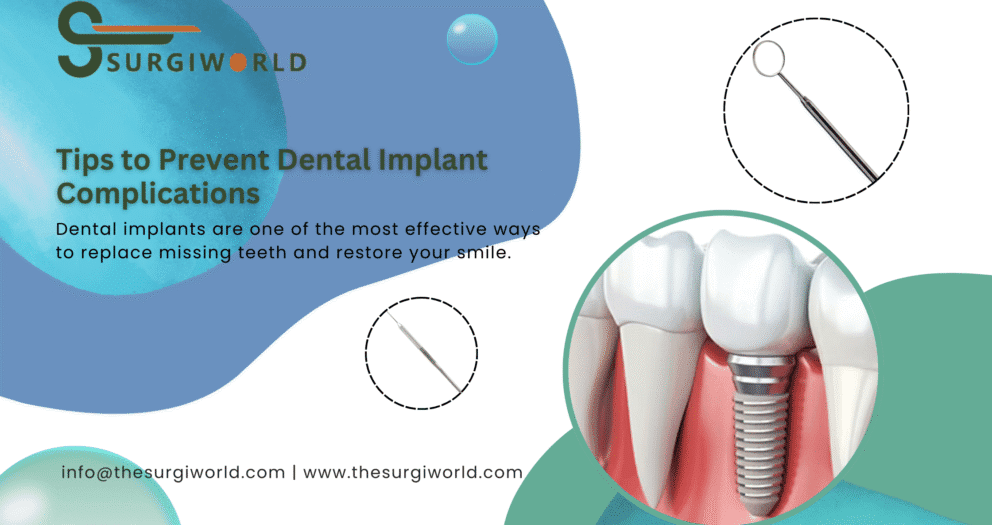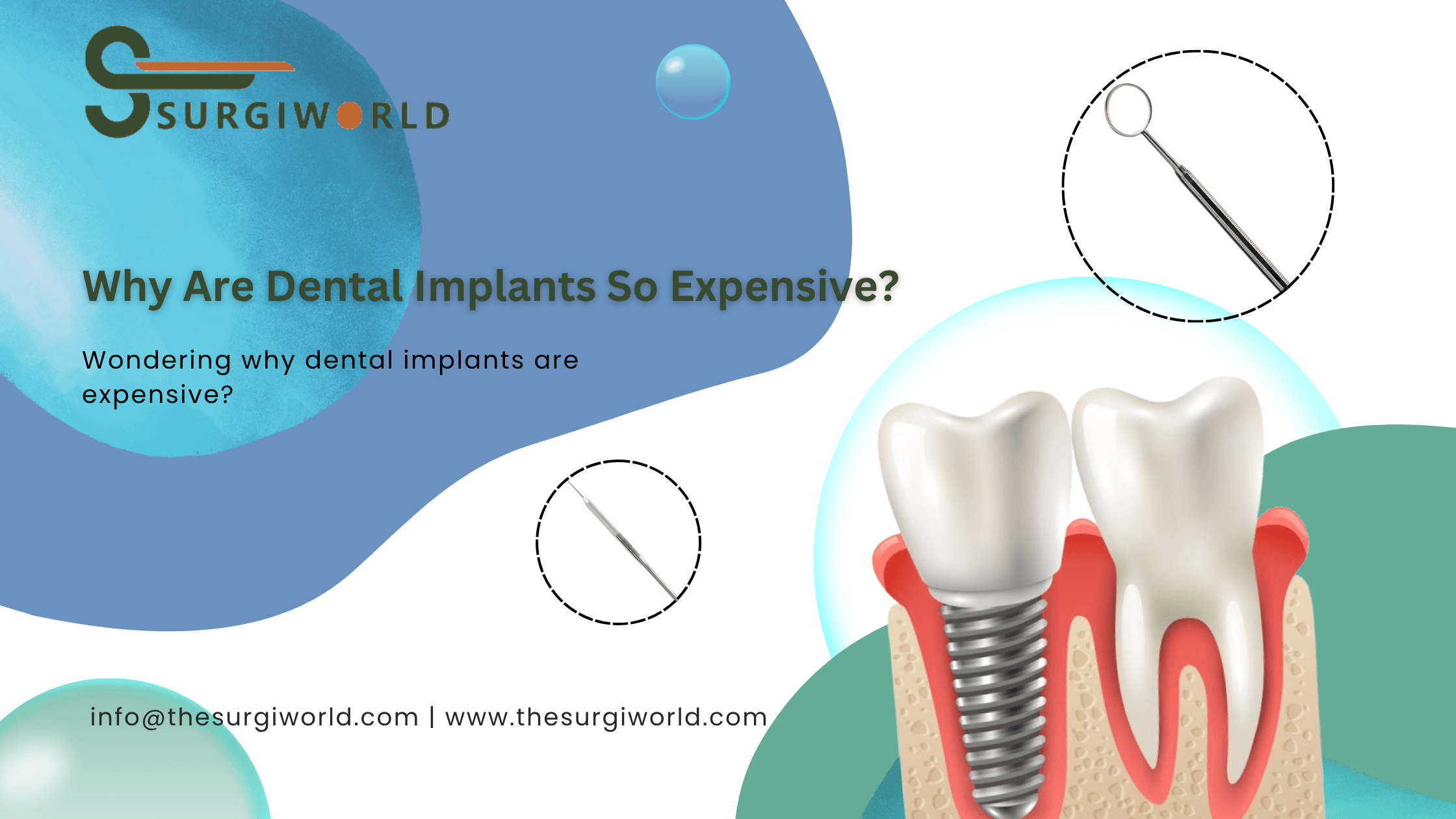Being accurate is very important in the world of dentistry. Having the correct tools and devices is just as important as having the knowledge and skills to use them for the examination. Dental explorers and periodontal probes have a major role in helping detect oral diseases. While they are both common in dentistry, X-rays and dental exams help in different ways to assess a patient’s oral health. This article looks at every tool individually, pointing out their differences, clinical uses, and why you should have both.
What Is a Dental Explorer?
The dental explorer, or probe is a thin, supple tool with a pointed end that is made of stainless steel. Lumining allows dental professionals to look at teeth and catch problems such as cavities, plaque or restorations that are not functioning properly. With this tool, dentists examine the mouth and identify where special attention is required.
Many professionals consider the explorer to be like a third eye because it lets them find hidden challenges by feeling.
Shop reliable dental explorer tools designed to enhance precision in dental diagnostics.
Types of Dental Explorers
Different types of explorers are available to suit specific needs:
- Straight explorers are typically used for examining margins of restorations.
- Curved explorers assist in checking shallow pockets and grooves.
- Pigtail or cowhorn explorers are ideal for interproximal areas.
- Orban-type explorers excel in detecting calculus on anterior teeth.
- The ODU 11/12 explorer is flexible and can be used in every area, even deep pockets.
What Is a Periodontal Probe?
Detecting problems on the surfaces needs other special tools, but if we want to check on the gums and the ligament that attaches the tooth to the bone, a periodontal probe is what we use. It is shaped like a small wand with marks at every millimetre to help measure the areas around every tooth. They help find out when you might start to get gum disease and let your dentist know how it might spread.
The probe is very carefully put into the space between the tooth and the gum tissue to check how deep the space is. A healthy sulcus usually is between 1 and 3 millimetres thick. Anything deeper might mean that there’s a problem with the gums, like gingivitis or periodontitis.
Find durable and precise dental probe tools designed for effective dental examinations and care.
Common Types of Probes
- The Williams probe is marked at 1, 2, 3, 5, 7, 8, 9, and 10 mm, providing essential reference points for standard assessments.
- The UNC15 probe gives more extensive measurement capability up to 15 mm, often used in more advanced cases.
- WHO probes are specially designed for community periodontal assessments, featuring a ball tip and colour bands.
- Colour-coded probes, such as the CPITN probe, enhance visibility and reduce user error during readings.
Comparing Explorers and Probes
Though explorers and probes are often used in the same patient session, they serve different diagnostic roles. Here’s a quick comparison:
| Feature | Dental Explorer | Periodontal Probe |
| Primary Use | Detect surface abnormalities | Measure gingival pocket depths |
| Tip Design | Sharp, pointed | Rounded, blunt |
| Measurement Marks | None | Millimeter markings |
| Application | Caries, calculus, defective restorations | Periodontal health, attachment loss |
| Sensitivity | High tactile sensitivity | Moderate tactile feedback |
Shop a wide range of professional dental hygiene tools designed for effective teeth cleaning and care.
Clinical Importance of Each Tool
Both instruments are indispensable for thorough dental diagnosis. Explorers allow dentists to identify issues before they become visible or symptomatic. Early caries detection is particularly critical in paediatric and preventive care. A slight catch or stick felt by the explorer’s tip can mean the difference between preventive treatment and needing a filling later on.
Meanwhile, periodontal probes are key in tracking gum health. Pocket depth measurements inform treatment planning for scaling, root planing, and other periodontal therapies. Probes also help in identifying bleeding points, furcation involvement, and recession—components that are crucial in periodontal charting and diagnosis.
Explore our premium collection of dental diagnostic instruments for accurate and efficient oral health assessments.
Integrating Explorers and Probes in Daily Practice
An effective clinical examination typically starts with probing to assess periodontal health, followed by exploration to evaluate the integrity of the teeth and restorations. For instance, a patient may have pockets that are within a normal range, but an explorer could reveal a leaking filling or incipient decay on a molar.
In hygiene appointments, explorers are regularly used to check for residual calculus after scaling, while the probe ensures periodontal maintenance goals are being met. Together, they provide a comprehensive picture of both hard and soft tissue health.
Shop the best selection of professional dental instruments online, designed to meet your clinic’s needs efficiently.
Conclusion
While dental explorers and periodontal probes look basic, their usage helps a lot in detecting problems. Explorers can detect problems with the gums and teeth that you might not notice, while probes help measure the well-being of the gums and bone around the teeth. Both allow doctors to assess the whole oral health of a patient and make informed decisions on treatment.
With all the advances in diagnostics, these basic tools still show us that the fundamental ones are sometimes the most important.







Write a comment
You must be logged in to post a comment.